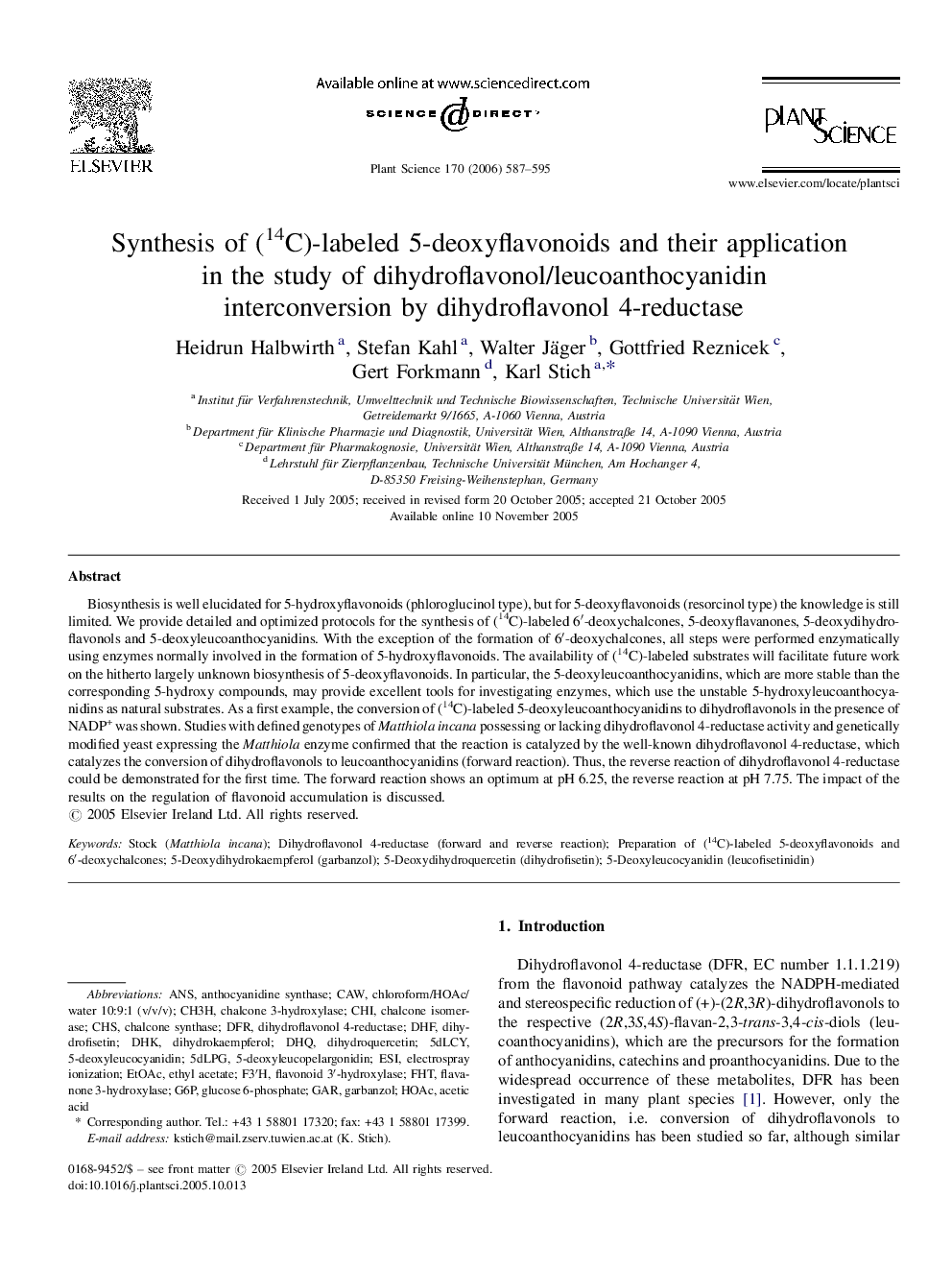| کد مقاله | کد نشریه | سال انتشار | مقاله انگلیسی | نسخه تمام متن |
|---|---|---|---|---|
| 2018871 | 1067886 | 2006 | 9 صفحه PDF | دانلود رایگان |

Biosynthesis is well elucidated for 5-hydroxyflavonoids (phloroglucinol type), but for 5-deoxyflavonoids (resorcinol type) the knowledge is still limited. We provide detailed and optimized protocols for the synthesis of (14C)-labeled 6′-deoxychalcones, 5-deoxyflavanones, 5-deoxydihydroflavonols and 5-deoxyleucoanthocyanidins. With the exception of the formation of 6′-deoxychalcones, all steps were performed enzymatically using enzymes normally involved in the formation of 5-hydroxyflavonoids. The availability of (14C)-labeled substrates will facilitate future work on the hitherto largely unknown biosynthesis of 5-deoxyflavonoids. In particular, the 5-deoxyleucoanthocyanidins, which are more stable than the corresponding 5-hydroxy compounds, may provide excellent tools for investigating enzymes, which use the unstable 5-hydroxyleucoanthocyanidins as natural substrates. As a first example, the conversion of (14C)-labeled 5-deoxyleucoanthocyanidins to dihydroflavonols in the presence of NADP+ was shown. Studies with defined genotypes of Matthiola incana possessing or lacking dihydroflavonol 4-reductase activity and genetically modified yeast expressing the Matthiola enzyme confirmed that the reaction is catalyzed by the well-known dihydroflavonol 4-reductase, which catalyzes the conversion of dihydroflavonols to leucoanthocyanidins (forward reaction). Thus, the reverse reaction of dihydroflavonol 4-reductase could be demonstrated for the first time. The forward reaction shows an optimum at pH 6.25, the reverse reaction at pH 7.75. The impact of the results on the regulation of flavonoid accumulation is discussed.
Journal: Plant Science - Volume 170, Issue 3, March 2006, Pages 587–595